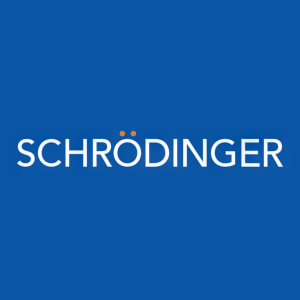Schrödinger Launches Initiative to Significantly Expand Application of Computational Tools for Predictive Toxicology
Initiative initially funded by
The initiative will be funded by a
“Drug discovery is an extremely challenging endeavor, and off-target toxicity is a significant cause of drug development failure. The application of our technology, at scale against a broad panel of known off-target proteins, has the potential to prevent a significant number of these failures, reducing the potential for safety issues in preclinical and clinical research, and lowering the cost and risk of drug development. Advances in structural biology and computer performance, coupled with the increasing accuracy of our computational platform, gives us a unique opportunity to address the need for high quality computational models for predictive toxicology,” stated Ramy Farid, Ph.D., chief executive officer at Schrödinger. “We appreciate the support from the Gates Foundation, which allows us to immediately scale up our efforts advancing this initiative.”
“Optimizing the safety profile of drug candidates is one of the most difficult challenges in drug discovery, and computational approaches have the potential to revolutionize the way we discover drugs by enabling the prediction of drug toxicity with unprecedented accuracy and efficiency prior to clinical testing,” stated Trevor Mundel, president, global health, at the Gates Foundation. “Leveraging computation to predict the toxicological risk of drug candidates could ultimately improve productivity across the pharmaceutical industry and unlock major advances against diseases that continue to plague low- and middle-income countries.”
“With its world-leading physics-based platform, Schrödinger has spearheaded the last two decades of computational drug and materials discovery,” said Kimberly Powell, vice president of healthcare at NVIDIA. “Accelerated computing — which introduces many orders of magnitude in discovery power — combined with generative AI will enhance researchers’ abilities to tackle complex scientific challenges like predictive toxicology, leading to faster, more efficient and effective discovery cycles and transformative medicines for patients.”
Schrödinger has already generated several computational predictive models of off-target drug activity. The company’s recent advances characterizing the structure of safety-related proteins such as hERG (recently published in Cell) and cytochrome P450 enzymes are examples of these efforts.
About Schrödinger
Schrödinger is transforming the way therapeutics and materials are discovered. Schrödinger has pioneered a physics-based computational platform that enables discovery of high-quality, novel molecules for drug development and materials applications more rapidly and at lower cost compared to traditional methods. The software platform is licensed by biopharmaceutical and industrial companies, academic institutions, and government laboratories around the world. Schrödinger’s multidisciplinary drug discovery team also leverages the software platform to advance a portfolio of collaborative and proprietary programs to address unmet medical needs.
Founded in 1990, Schrödinger has approximately 850 employees and is engaged with customers and collaborators in more than 70 countries. To learn more, visit www.schrodinger.com, follow us on LinkedIn and Instagram, or visit our blog, Extrapolations.com.
Cautionary Note Regarding Forward-Looking Statements
This press release contains forward-looking statements within the meaning of The Private Securities Litigation Reform Act of 1995 including, but not limited to those statements regarding Schrödinger’s expectations about the speed and capacity of its computational platform, the long-term potential of its business, its ability to improve and advance the science underlying its platform, including the ability to predict off-target activity, its ability to improve drug discovery and the timing during which the initiative’s technology will become available to software customers and collaborators, as well as expectations related to the use of its cash, cash equivalents and marketable securities. Statements including words such as “aim,” “anticipate,” “believe,” “contemplate,” “continue,” “could,” “estimate,” “expect,” “goal,” “intend,” “may,” “might,” “plan,” “potential,” “predict,” “project,” “should,” “target,” “will,” “would” and statements in the future tense are forward-looking statements. These forward-looking statements reflect Schrödinger’s current views about its plans, intentions, expectations, strategies and prospects, which are based on the information currently available to the company and on assumptions the company has made. Actual results may differ materially from those described in these forward-looking statements and are subject to a variety of assumptions, uncertainties, risks and important factors that are beyond Schrödinger’s control, including the demand for its software platform, its ability to further develop its computational platform, its reliance upon third-party providers of cloud-based infrastructure to host its software solutions, factors adversely affecting the life sciences industry, fluctuations in the value of the
View source version on businesswire.com: https://www.businesswire.com/news/home/20240726774411/en/
Jaren Madden
Schrödinger, Inc. (Investors)
617-266-6264
Matthew Luchini (Investors)
Schrödinger, Inc.
matthew.luchini@schrodinger.com
917-719-0636
Allie Nicodemo (Media)
Schrödinger, Inc.
allie.nicodemo@schrodinger.com
617-356-2325
Source: Schrödinger







